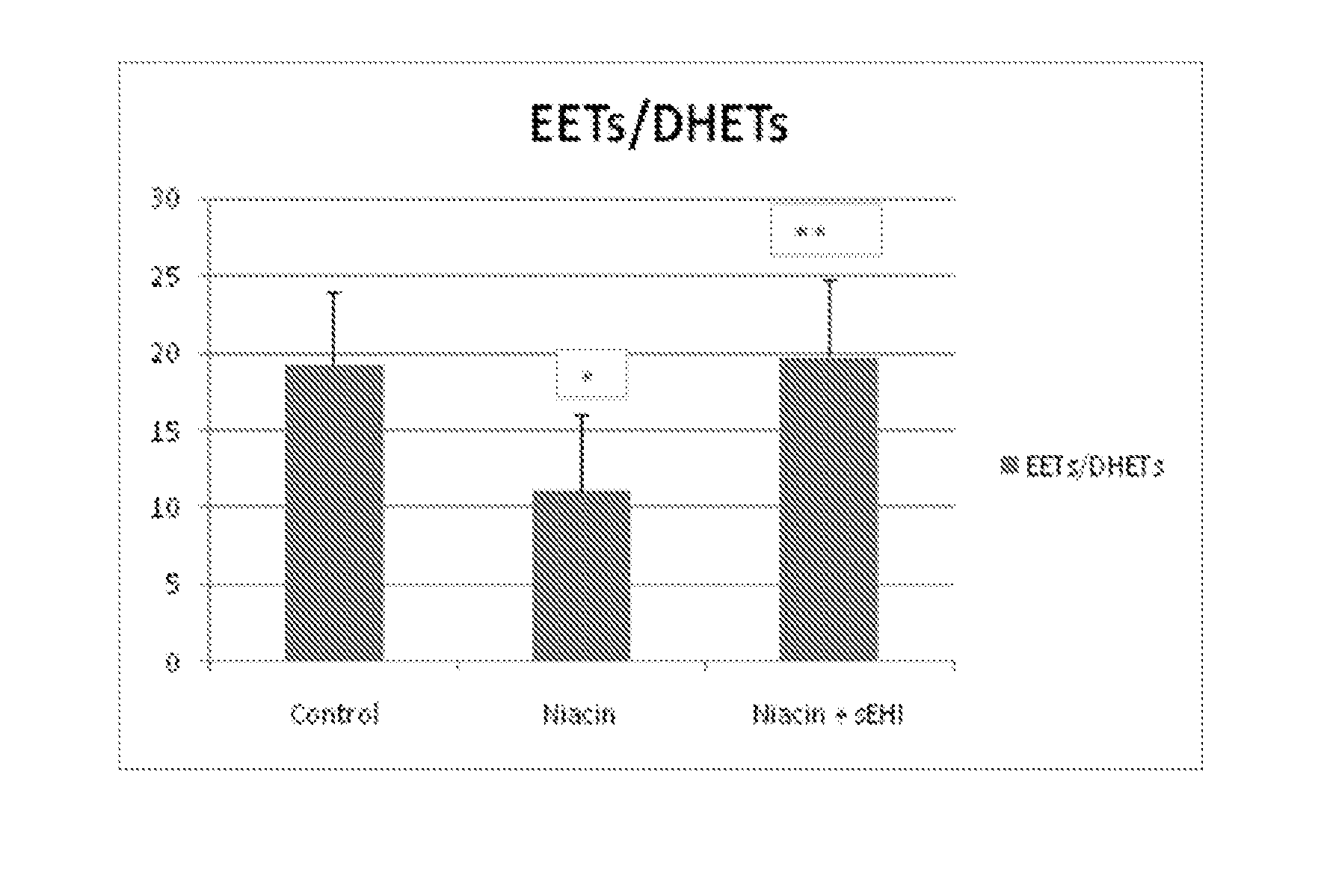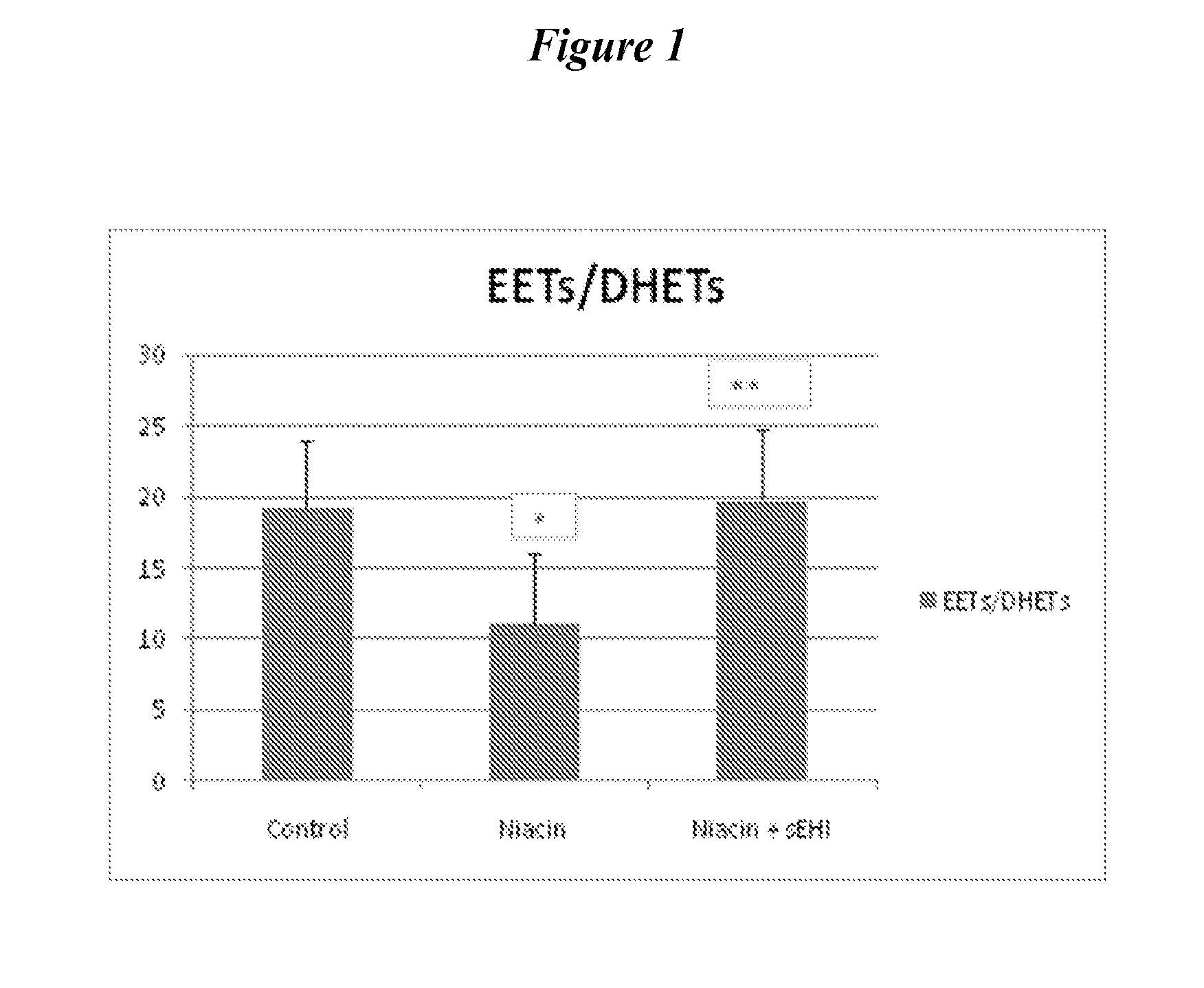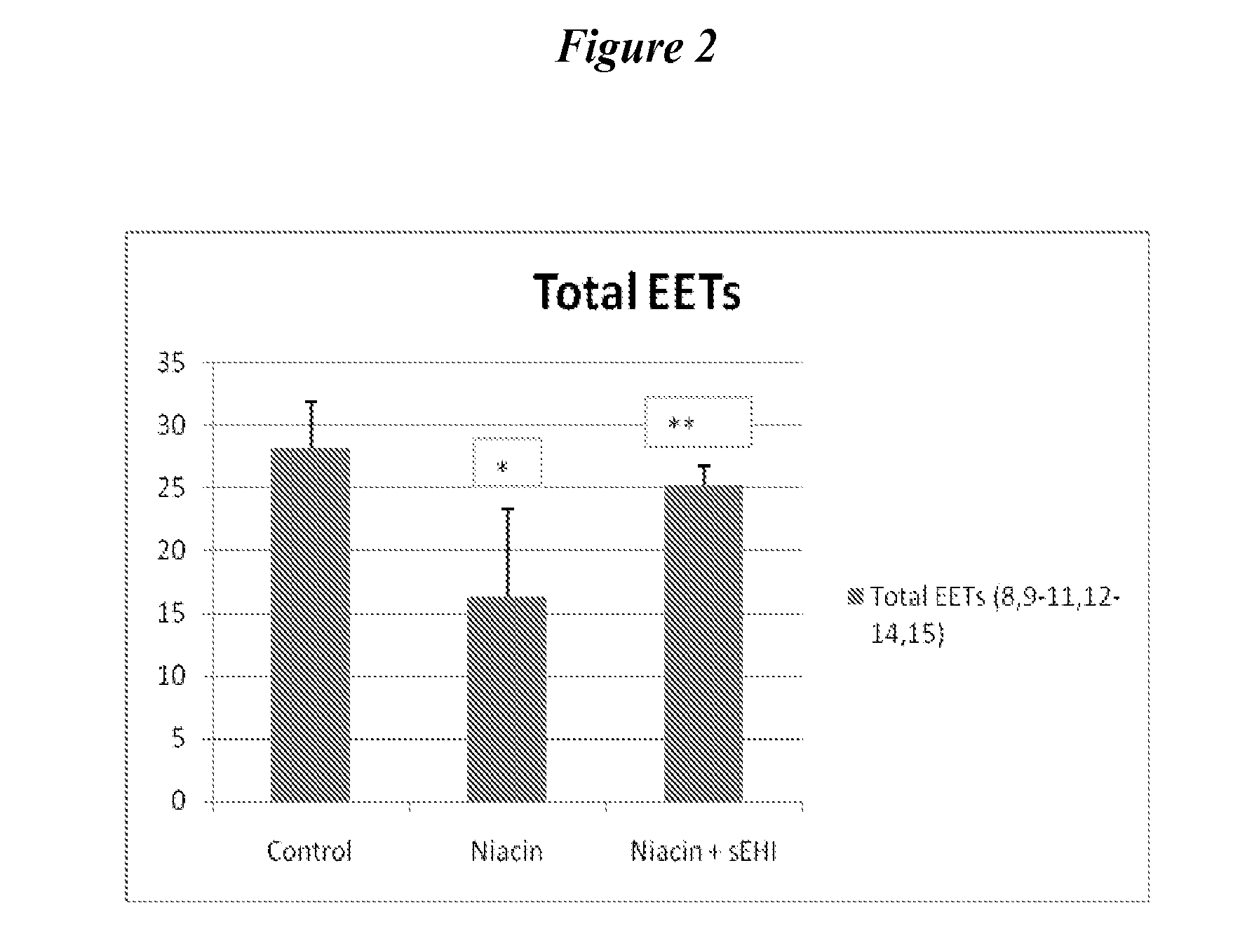Inhibitors of soluble epoxide hydrolase to inhibit or prevent niacin-induced flushing
a technology of soluble epoxide hydrolase and inhibitors, which is applied in the direction of heterocyclic compound active ingredients, biocide, drug compositions, etc., can solve the problems of disabling discomfort and interference with normal activities, severely limited use of niacin and high discontinuation rate in a majority of patients. , to achieve the effect of preventing, reducing or blocking substantial flushing
- Summary
- Abstract
- Description
- Claims
- Application Information
AI Technical Summary
Benefits of technology
Problems solved by technology
Method used
Image
Examples
example 1
Materials and Methods
[0169]Mouse Model: C57BL / 6 mice were obtained from Charles River Laboratories (location). sEHi knockout mice were generated at UC Davis using the C57BL / 6 background [EnayetAllah, et al., J Biol. Chem. (2008) 283(52):36592-8]. For the experiments, mice were anesthetized using Nembutal (50 mg / kg) given by intraperitoneal (I.P.) injection. Niacin was administered intraperitoneally at a concentration of 30 mg / kg in physiologic saline (equivalent to a human dose of ˜2 grams). sEH inhibitors and other compounds (e.g. aspirin, COX-2 inhibitors) were administered intraperitoneally over a range of relevant doses 30 minutes before niacin.
[0170]Laser Doppler ear blood flow: The change in ear flow was measured using a laser doppler flowmeter (BLF 21, on loan from Transonic Systems, Inc., Ithaca, N.Y.). As described by Cheng et al [Proc Natl Acad Sci (2006) 103(17):6682-7] the flow probe was placed against the ventral aspect of the right ear of the anesthetized mouse. The la...
example 2
Inhibitors of Soluble Epoxide Hydrolase (sEH) do not Reduce Levels of Prostaglandin D2 (PGD2) in the Presence of Niacin
[0173]Subcutaneous administration of niacin at a dose of 30 mg / kg alone (i.e., without sEHi) reduced plasma levels of EETs, either as total EETs or as the ratio of EETs / DHETs (FIG. 1-3). These data suggest that niacin, at least acutely, decreases the favorable endogenous balance of vasodilatory vs vasoconstrictive prostaglandins. Treatment with sEHi (TPAU, 3 mg / kg) counters this reduction in EETs, returning the physiologic balance of EETs to DHETs.
[0174]Since prior studies (Cheng, et al., (2006) Proc Natl Acad Sci 103(17):6682-7) showed that the flushing response to niacin was largely due to PGD2 stimulation of the DP1 receptor, we examined whether the sEH inhibitor TPAU could block PDG2 induced vasodilation. Pretreatment with a concentration of TPAU that was clearly sufficient to inhibit the niacin-induced increase in tissue perfusion did not limit the increase in ...
example 3
Knocking Out sEH Gene Prevents Niacin-Induced Flushing
[0177]Male C57BL / 6 wild type mice (n=6, closed circles) were anesthetized with Nembutal™ (50 mg / kg) and ear cutaneous perfusion was measured for 5 minutes to obtain a baseline. Animals were then injected with a niacin solution (30 mg / kg, in physiological saline) and further monitored for 15 minutes. Niacin in these animals induced a rapid increase in blood flow as shown by an increased perfusion rate. A similar procedure was followed for a group of mice (n=6, open circles) that lack the sEH enzyme. These animals were generated using the C57BL / 6 background. In sEH null mice the flushing response to niacin (30 mg / kg) was greatly attenuated. The results are shown in FIG. 6
PUM
| Property | Measurement | Unit |
|---|---|---|
| mass median diameters | aaaaa | aaaaa |
| volume | aaaaa | aaaaa |
| concentrations | aaaaa | aaaaa |
Abstract
Description
Claims
Application Information
 Login to View More
Login to View More - R&D
- Intellectual Property
- Life Sciences
- Materials
- Tech Scout
- Unparalleled Data Quality
- Higher Quality Content
- 60% Fewer Hallucinations
Browse by: Latest US Patents, China's latest patents, Technical Efficacy Thesaurus, Application Domain, Technology Topic, Popular Technical Reports.
© 2025 PatSnap. All rights reserved.Legal|Privacy policy|Modern Slavery Act Transparency Statement|Sitemap|About US| Contact US: help@patsnap.com



